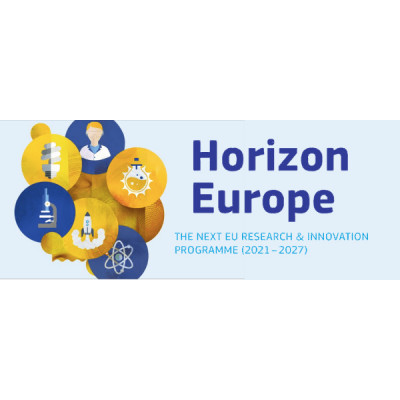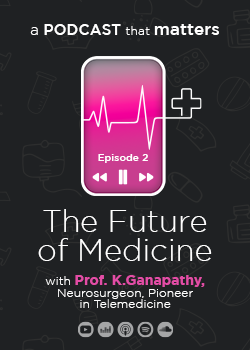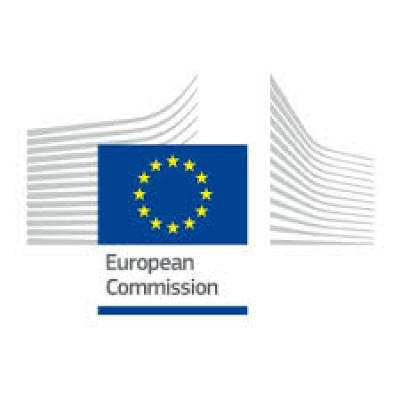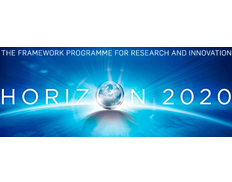
Intelligent & Integrated Asset Management
Details
Description
Call Updates
Jun 28, 2022 2:57:11 PM
A total of 7 proposals were submitted to this call.
- HORIZON-ER-JU-2022-FA3-01 : 1 proposal
The evaluation of the proposals will start in June and will be finalized in July 2022.
Applicants are expected to be informed about the outcome of the evaluations, indicatively, mid-August 2022.
The successful proposals will go through the Grant Agreement Preparation (GAP) phase and the deadline for the Grant Agreement signature is end November 2022.
Jun 10, 2022 11:16:55 AM
On 10 June 2022 a new release of the "Questions & Answers" document was published (Topic Conditions section: Additional Documents).
May 24, 2022 12:02:29 PM
On 24 May 2022 a new release of the "Questions & Answers" document was published (Topic Conditions section: Additional Documents).
May 11, 2022 2:14:44 PM
On 11 May 2022 a new release of the "Questions & Answers" document was published (Topic Conditions section: Additional Documents).
May 2, 2022 3:38:50 PM
On 02 May 2022 a new release of the "Questions & Answers" document was published (Topic Conditions section: Additional Documents).
Apr 20, 2022 1:08:00 PM
On 20 April 2022 a new release of the "Questions & Answers" document was published (Topic Conditions section: Additional Documents).
On 31st March 2022 a new release of the "Questions & Answers" document was published (Topic Conditions section: Additional Documents).
Mar 22, 2022 12:07:16 PM
On 22 March 2022 a new release of the "Questions & Answers" document was published (Topic Conditions section: Additional Documents).
Mar 10, 2022 8:10:59 AM
The submission session is now available for: HORIZON-ER-JU-2022-FA3-01(HORIZON-JU-IA)
Intelligent & Integrated asset management
TOPIC ID: HORIZON-ER-JU-2022-FA3-01
Programme: Horizon Europe Framework Programme (HORIZON)
Work programme part: HORIZON-JTI-ER-2022
Call: EU-RAIL JU Call Proposals 2022-01 (HORIZON-ER-JU-2022-01)
Work programme year: HORIZON-JTI-ER-2022
Type of action: HORIZON-JU-IA HORIZON JU Innovation Actions
Type of MGA: HORIZON Lump Sum Grant [HORIZON-AG-LS]
Deadline model: single-stage
Opening date: 10 March 2022
Deadline date: 23 June 2022 17:00:00 Brussels time
DESTINATION 3 – Intelligent & Integrated asset management
The financial and, to a certain extent, environmental costs associated with designing, building, constructing, operating, maintaining, and decommissioning rail drive also its capacity to compete and offer attractive services for the clients, passengers and supply chain. Therefore, rail asset management is a key area for research and innovation.
In the vision of the future rail asset management, assets status evolution information will be integrated with TMS (Traffic Management System) to improve services, reducing unavailability by limiting the impact of in-service failures and/or providing alternative solutions without cost impacts, and increasing safety. Moreover, the available information combined with AI (Artificial Intelligence) and digital twins will introduce intelligence to the management and optimize the overall life cycle and operation of the rail system.
The selected proposal for funding under this Destination will be a Flagship Project of Europe’s Rail with significant expected impacts, which require an integrated sector systemic approach. Proposals, should therefore set out a credible pathway (including an exploitation plan) to contributing to all of the following expected impacts as described in the Master Plan.
|
Meeting evolving customer requirements |
Reduced costs |
More sustainable and resilient transport |
Improved EU rail supply industry competitive-ness |
Improved performance and capacity |
||
These can be further detailed with specific impacts of this destination, as:
- Increase the volumes of rail transportation on existing lines;
- Improve the cost-effectiveness of rail transportation on existing lines;
- Reduce the CO2 emissions from the maintenance of existing lines;
- Reduce the construction time and costs of new assets;
- Increase in durability and reliability of assets;
- Optimise life-cycle costs of assets;
- Strengthen European rail industry competitiveness with more qualified products;
- Improve Flexibility and punctuality of the railway system.
Proposals under this Destination should set appropriate monitoring and demonstration activities to measure the following KPIs:
|
# |
Demonstrator Name |
High level theme and result |
KPI’s |
|
|
1 |
Asset Management & TMS |
Integration of Intelligent Asset Management System (IAMS) & TMS |
|
|
|
2 |
Asset Management & Rolling Stock |
Asset Management of Rolling Stock Operation, including specific solutions for freight |
|
|
|
3 |
Long Term Asset Management |
Infrastructure & Rolling Stock long-term Asset Management |
|
|
|
4 |
Asset Management & Infrastructure |
Asset Management of Infrastructure Operation |
|
|
|
5 |
Asset Management & Digital Twins |
Digital Twin Asset Management, addressing both Rolling Stock & Infrastructure |
|
|
|
6 |
Design & Manufacturing |
Advanced and Holistic Design |
|
|
|
7 |
Robotics & Interventions |
Remotely controlled and unmanned interventions |
|
Expected Outcome:
To achieve the overall goal of this destination, five high-level capabilities have been identified, and the expected solutions should integrate the following:
Information sharing across the supply chain and TMS
The focus is on the ability to capture and share information securely across the entire rail system lifecycle, including operation, of rail assets. Furthermore, this area of action includes the secure exchange of information between the existing TMS [Results from Shift2Rail activities should be taken into account, see public deliverables of S2R TD2.9 (TMS) available here: WP6 deliverables: https://projects.shift2rail.org/s2r_ip2_n.aspx?p=X2RAIL-2] and the Intelligent Asset Management System [Results from Shift2Rail activities should be taken into account, see public deliverable of S2R TD3.6, TD3.7 and TD3.8 (IAMS) available here: IN2SMART-2 - D3.1 https://projects.shift2rail.org/download.aspx?id=1fc574ec-1a28-4199-b77b-402d352d62f0] (IAMS).
Unmanned and non-invasive monitoring and inspections
Building upon the work delivered by IP3 [public deliverables of S2R TD3.6, TD3.7 and TD3.8 (IAMS) available here:
IN2SMART (D9.1 ; D8.5 ; D7.4 ; D7.3 ; D7.2 ; D7.1 ; D4.1 ; D3.5): https://projects.shift2rail.org/s2r_ip3_n.aspx?p=IN2SMART MOMIT (D1.1 ; D1.2 ; D1.3; D2.1 ; D2.2 ; D3.1 ; D3.2 ; D4.1 ; D4.2): https://projects.shift2rail.org/s2r_ip3_n.aspx?p=MOMIT IN2DREAMS (D5.1; D5.3 ; D5.4): https://projects.shift2rail.org/s2r_ip3_n.aspx?p=S2R_IN2DREAMS ] in S2R and other research and innovation activities, the objective is to enhance the capability for automated and unmanned inspection and monitoring, evolving towards non-invasive and self-diagnostic systems with no or minimal service disruptions.
Advanced and holistic asset decisions
Building upon the work delivered by IP35 in S2R and other research and innovation, the focus is on the capability of making decisions in an advanced, automated, centralised, and holistic manner, considering the different assets, actors, standards, and regulations, especially combining track and rolling stock data. Furthermore, Digital Twins and enhanced visualisation techniques shall be exploited to support decision-making.
Advanced and holistic design and certification of assets (including virtual certification)
Building upon the work delivered by S2R [Public deliverables of S2R TD3.1 to 3.5 available here :IN2TRACK (D2.1 ; D2.2 ; D2.3 ; D3.1 ; D3.2 ; D3.3 ; D4.1): https://projects.shift2rail.org/s2r_ip3_n.aspx?p=IN2TRACK Public deliverable of CCA WA3.5 - Virtual Certification available here :PLASA2 – WP5: https://projects.shift2rail.org/s2r_ipcc_n.aspx?p=plasa-2] and other research and innovation, this outcome has a clear focus on the development of newly deployed components for the rail system with a LCC and system performance approach. Furthermore, in conjunction with the following capability, the use of additive manufacturing techniques shall be addressed, as well as the use of self-healing techniques and materials.
Remotely controlled and unmanned interventions
Building upon the work delivered by IP3 [Public deliverable of S2R TD3.8 (Lean Execution) available here:
IN2SMART – WP10: https://projects.shift2rail.org/s2r_ip3_n.aspx?p=IN2SMART] in S2R and other research and innovation, the objective is the development of capabilities for remote, automated, and unmanned intervention actions in rail systems. This shall make use of various technologies, including from other industries, such as robotics and wearable devices to support rail personnel, improve safety and increase the efficiency of intervention tasks.
The Flagship Project stemming from this topic should deliver, by 2025, innovative solutions to be demonstrated under the following high-level principles:
- The integration of the complete value chain.
- The exploitation of synergies between stakeholders at different levels, for instance, with respect to crossed monitoring.
- The prioritisation of activities to achieve 2030 European objectives in rail mobility, exploiting Shift2Rail results.
The demonstrators for innovative solutions shall have several operational differences to be covered, including:
- Climate. The proposed solutions shall have to be able to take into account the wide variety of European climate types.
- Line type. Demonstrators shall address high speed, conventional, regional, suburban and freight lines.
- Traffic type. Demonstrators shall cover passenger, freight and mixed lines.
- Asset type. Infrastructure and rolling stock shall be addressed jointly whenever possible considering all assets, including track, civil structures, earthworks, signalling, vehicles, track side, stations or power infrastructures.
- Planning level. demonstrators shall cover the Strategic Asset Management Plan level (SAMP), the Asset Management Plan level (AMP) and the Implementation of the Asset Management Plan level (IAMP).
The destination shall research, develop and deliver solutions that can be demonstrated by system approaches of the various developments targeting up to TRL 6 as European common integrated solutions. Due consideration should be given to certification and validation of the new technologies and processes as part of those demonstrators, that may be supported by several Use Cases:
- Asset Management & TMS. The main aim of the demonstrator shall be to show the integration between the Intelligent Asset Management System (IAMS) and the Traffic Management System (TMS) enabling the sharing of data and optimising decisions using common metrics – TRL6 by 2025.
- Asset Management & Rolling Stock. The main objective of this demonstrator shall be to present the monitoring of rolling stock (including on board and wayside technologies) leading to decisions and planning of interventions, and redirecting rolling stock to workshops to execute the (re)scheduled work both manually as well as by new technologies and solutions to conduct inspection tasks automatically – TRL6 by 2025.
- Long Term Asset Management. Development of Life Cycle Cost (LCC) models for infrastructure and rolling stock. This demonstrator shall include cross-border infrastructure remaining useful-life analysis and space-time cross-analysis and visualisation – TRL6 by 2025.
- Asset Management & Infrastructure. The objective shall be to integrate on field and on board systems with central platforms capable of managing Big Data to enable prescriptive interventions, minimising dangerous situations and service disruptions during operation – TRL6 by 2025.
- Asset Management & Digital Twins. The focus shall be on design, maintenance, upgrade and renewal interventions driven by Digital Twins for the optimisation of processes, maintenance planning and involved logistics. This shall enforce the use of BIM to standardise system configuration and AI tools to execute simulations and predictions. The Digital Twin demonstrator shall include visualisation, prediction and simulation – TRL7 by 2025.
- Design & Manufacturing. This demonstrator shall be the showcase of eco-friendly production of resilient assets supported by new fabrication techniques such as additive manufacturing (focussed on infrastructure assets) – TRL5 by 2025.
- Robotics & Interventions. The focus of this demonstrator shall be the showcase of high-tech automated execution solutions for construction and interventions supported by robotics and wearables, among other devices, building a safer and more automated railway environment.- TRL5/6 by 2025.
Each of these high-level demonstrators shall be further detailed and filled with specific, tangible and suitable use cases illustrating the impact of the technologies in concrete solutions. The choice of these use cases shall be based on sound business cases supported by a wide range of stakeholders possibly covering a wide range of assets proofing the versatility of the technologies, such as:
- Physical infrastructure: track, civil structures, earthworks, signalling, track side, stations or power infrastructures.
- Rolling stock: passenger service, freight and light/urban vehicles.
The business cases shall illustrate that major and widely recognised pain points are addressed ensuring that the wide deployment of the outcomes will contribute to a significant improvement in cost reduction, direct cost or LCC and/or reliability of the system or work conditions.
Where an opportunity would materialize to achieve more aggregated demonstrators, especially linking demonstrators in the area of asset management, in business cases that will link digital twins, TMS and asset management for rolling stock and/or infrastructure, this should be pursued.
The action to be funded under this Destination also needs to provide the following necessary elements for the demonstrations under the action to be funded under the Destination 5 – Sustainable Competitive Digital Green Rail Freight Services to be delivered for 2025 demonstrations: enabler 3 as described under the Scope section of this Destination. In addition of the above, the proposal shall cover important preparatory works needs to be launched for the future set of FA5 demonstration foreseen in the Multi- annual Work programme in view of the evolutions of the solutions, linked with the same enabler at higher TRL.
The action to be funded under this Destination also needs to be provide the following necessary elements for the demonstrations under the action to be funded under the Destination 1 – Network management planning and control & Mobility Management in a multimodal environment to be delivered for 2025 demonstrations: enabler 1 as described under the Scope section of this Destination. In addition of the above, the proposal shall cover important preparatory works needs to be launched for the future set of FA1 demonstration foreseen in the Multi- annual Work programme in view of the evolutions of the solutions, linked with the same enabler at higher TRL.
Scope:The Flagship Project stemming from this topic shall develop under the following capabilities the enablers and any other which may contribute to deliver the aforementioned expected outcome:
Capability for Information sharing across the supply chain and TMS
Enabler 1: Scalable information platform to integrate and exchange information (e.g., asset health, maintenance planning, fleet operation, etc.) across the supply chain and TMS, requiring necessary management and sharing agreements between the involved actors at TRL6 in 2025, amongst others:
- secure standardised interfaces, methods, and processes for different data exchange (e.g., inspection devices to Asset Management Platform, etc.) at TRL6 in 2025, and
- high performance and/or edge computing solutions coupled with secure, wired, and wireless communication networks for information sharing at TRL6 in 2025.
Developments on all those enablers should also cover important preparatory works with higher TRL for the future set of demonstration foreseen in the Multi- annual Work programme in view of the evolutions of the solutions.
Capability for Unmanned and non-invasive monitoring and inspections
Enabler 2: Improved (in terms of cost reduction and/or better accuracy) asset diagnostic and inspection systems, as well as advanced, context aware, unmanned automated monitoring and inspections solutions at TRL6 in 2025, amongst others:
- AI and ML solutions and data fusion algorithms respectively to analyse and combine information provided by different inspection techniques at TRL6 in 2025;
- Secure standardised interfaces for different data exchange with precise time-stamping, synchronisation and accurate positioning solutions for data integrity at TRL6 in 2025; and
- energy-efficient inspection solutions with harvesting techniques and specific embedded wired and wireless communication networks at TRL6 in 2025;
More specifically, one Use Case shall address:
Enabler 3: Development of CBM methodologies and algorithms to be potentially exploited by the DAC based digital applications on CBM (TRL7) in 2025.
Developments on all those enablers should also cover important preparatory works with higher TRL for the future set of demonstration foreseen in the Multi- annual Work programme in view of the evolutions of the solutions.
Capability for Advanced and holistic asset decisions
Enabler4: New methodologies and technologies to leverage advanced and holistic asset decisions during the span of their life cycle at TRL6 in 2025, based on:
- probabilistic models for standardised railway asset LCC determination and for component failure in the asset maintenance decision strategy, at TRL6 in 2025
- operational and IoT data with additional rail system information and knowledge integrated with technologies to enable cooperative diagnostic between assets at TRL8 in 2025;
- AI-based hybrid Decision Support based on predictive and prescriptive data analytics and Machine Learning algorithms for anomaly detection and failure prediction with optimised human-AI interactions at TRL6 in 2025.
Enabler 5: Digital Twins integrated with BIM, GIS tools, and Virtual and Augmented Reality to enable agile visualization for different stakeholders of asset health status (historical, current, and forecasted) in various use cases at TRL 7 in 2025.
Developments on all those enablers should also cover important preparatory works with higher TRL for the future set of demonstration foreseen in the Multi- annual Work programme in view of the evolutions of the solutions.
Capability for Advanced and holistic design and certification of assets
Enabler 6: Advanced and holistic design and certification of assets, at TRL 5 in 2025, based on new ethical-by-design materials with advanced LCC characteristics, automated certification techniques (including virtual certification), and advanced embedded sensors for self-diagnostic materials.
Capability for Remotely controlled, unmanned and metadata-assisted interventions
Enabler 7: Development of remotely controlled, unmanned and metadata-assisted interventions in construction, maintenance, and renewal operations, based on:
-
- non-invasive or collaborative unmanned robotic actuators and wearables at TRL5 as well as vehicles based on AI and ML at TRL6 in 2025, and
- additive manufacturing techniques and validation standards for manufacturing and repairing assets at TRL 6 in 2025.
Developments on all those enablers should also cover important preparatory works with higher TRL for the future set of demonstration foreseen in the Multi- annual Work programme in view of the evolutions of the solutions.
The action shall actively contribute to measure and monitor the specific quantitative KPIs defined in the Destination description above, including its contribution to the Europe’s Rail Master Plan impacts.
The action shall actively contribute to the EU-Rail standardisation rolling development plans wherever relevant. Similarly, the action shall contribute to the development and implementation of EU policy and legislation including Technical Specifications for Interoperability and Common Safety Methods, as well as to publications of the System Pillar.
Collaboration work required with other FAs
The action to be funded under Destination 3 shall foresee a common activity/task related to capturing specific requirements and review of specifications relevant to the actions to be funded under Destination 1 and 5.
Interaction with the System Pillar
The System Pillar aims to guide, support and secure the work of the Innovation Pillar (i.e. to ensure that research is targeted on commonly agreed and shared customer requirements and operational needs, compatible and aligned to the system architecture), and the Innovation Pillar will impact the scope of the System Pillar where new technologies or processes mean that innovations can drive a change in approach, as well as delivering detailed specifications and requirements.
In this respect, the necessary resources would have to be dedicated to areas linked to System Pillar conceptual and architecture works – particularly addressing specification development (the interaction is illustrated in the System Pillar – Innovation Pillar interaction note (Annex VI of this Work Programme). The alignment of the activities will primarily take place during the Grant Preparation Phase and ramp up phase of the awarded proposal, and there will be continued interaction through the life of the project.
Gender dimension
In this topic the integration of the gender dimension (sex and gender analysis) in research and innovation content is not a mandatory requirement.
Specific Topic Conditions:Activities are expected to achieve a minimum between TRL 5 and TRL 8, depending on the enabler addressed, or higher by the end of the project – see General Annex B for a guide to the TRL definitions and criteria to be used.
Cross-cutting Priorities:Digital Agenda




